Mayon: The people constantly fleeing a Philippine volcano
- Published
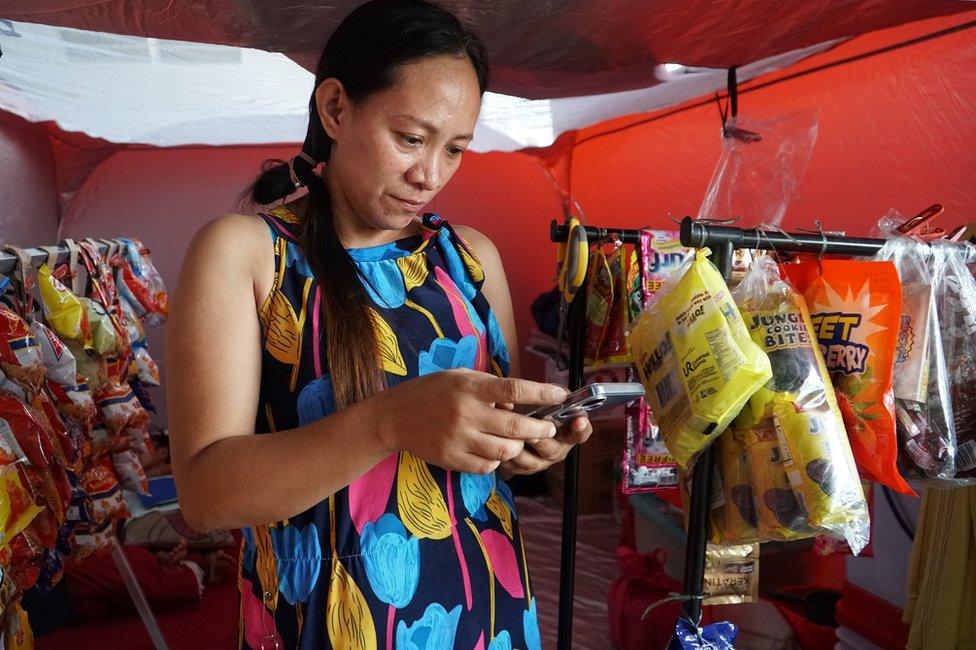
Monet Oxales has transferred her mini grocery story to a volcano shelter
Monet Oxales arranges packs of crisps and sweet bread for sale as the smell of raw fish wafts from a maze of tents. It's an hour before noon and the familiar lunchtime rush is playing out in a shelter, instead of her village near the Philippines' angry Mayon volcano.
Thousands in the Philippines' Albay province in the northeast peninsula of Bicol are living in shelters for an indefinite period as Mayon, the country's most picturesque, yet highly active volcano, oozes lava and remains under watch for a possible violent eruption.
Spending weeks or even months on end in evacuation centres has become routine for those who have lived under Mayon's shadow all their lives. For Ms Oxales, this means bringing her mini grocery store with her. For those who need to do their laundry, she also sells small packs of detergent.
The 40-year-old has lived in a shelter five times in her life. Since arriving about a week ago, she has transferred tents twice. Ms Oxales hopes the volcano will calm down soon so that her family can return to the only piece of land that they own.
"We can't totally leave our village because we're poor," she tells the BBC, as she watches over her five year-old daughter, who has been running a fever since they left their home in the farming town of Guinobatan.
"Our place is beautiful. Mayon eruptions are the only major problems we have. It's a natural disaster. We can't do anything but to temporarily leave our village."
She worries that her children will get sick from inhaling volcanic ash constantly. Potable water in her shelter comes in trickles so she makes sure to keep one red pail full for her family of four. They are also in need of electricity to keep their mobile phones and rechargeable fans juiced up.
"What can we do but to endure this?" she asks.

Mayon volcano glows a fiery red at night as lava cascades from its crater
In another shelter, Benjamin Nasol, a motor taxi driver, worries about the small pig farm he left behind. Every night he returns to his home in Camalig town for a few hours to ensure that his animals are fed and safe from thieves.
"We are used to it," the 53-year-old tells the BBC. He says the sight of molten rocks cascading from Mayon's crater does not scare him one bit as it is his third time in a volcano shelter.
"Even if you are weary or exhausted, you need to do your obligations in the village, then you come back to your family here in the evacuation centre," he says.
State scientists flagged increased activity on Mayon in early June, after they observed more frequent earthquakes and rockfalls from the crater. It is now under the third-highest alert based on a five-tier scale that measures the probability of an explosive eruption.
Technically, Mayon is erupting, albeit at a slow pace.
From a hilltop observatory, volcanologist Paul Alanis looks for visual cues that could upgrade the alert level. Those alerts then determine how many people will need to be evacuated. When Level 3 was declared on 8 June, at least 13,000 people were immediately moved to shelters. Several thousands more were evacuated in the succeeding days.
For what's invisible to the naked eye, Mr Alanis uses a seismometer to measure movements underground.
The most telling sign that Mayon was acting up was the swelling of a dome on its crater that was left by its last lava eruption in 2018, Mr Alanis says. That so-called lava dome appeared to be growing as early as April this year.
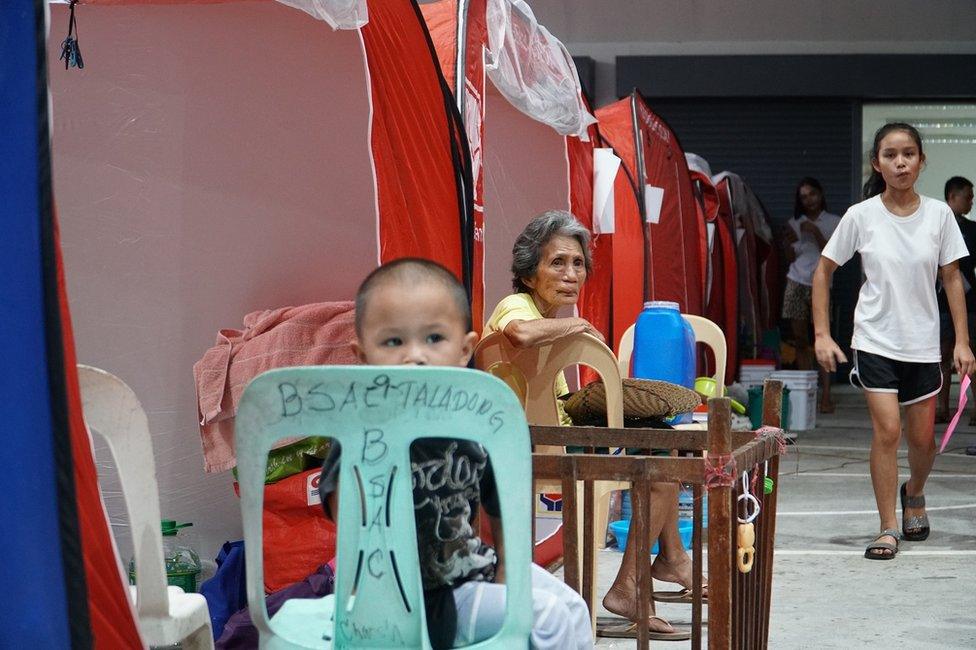
Sheltering from Mayon has become a habit for villagers who live in its shadow
There was a sense of anxiety in the observatory last week.
"At any time, the condition of the volcano could escalate. We had to prioritise to get the people out," Mr Alanis tells the BBC.
The volcanologist's job also includes explaining what's happening in Mayon to the provincial governor and disaster response officials so that they can prepare accordingly.
The slow-moving lava flows could mean two things, Mr Alanis says. It's either there's not enough hot gas inside the volcano for an explosive eruption or that the molten rock's path is clogged, preventing gas from escaping to the surface.
"We need to find other reasons why is that happening. But right now, I can't really tell," he says. "At the moment, there's no technology that can predict when a volcano would erupt."
The Philippines has 24 active volcanoes and is located in the Pacific Ring of Fire, so-called for its history of volcanic activity.
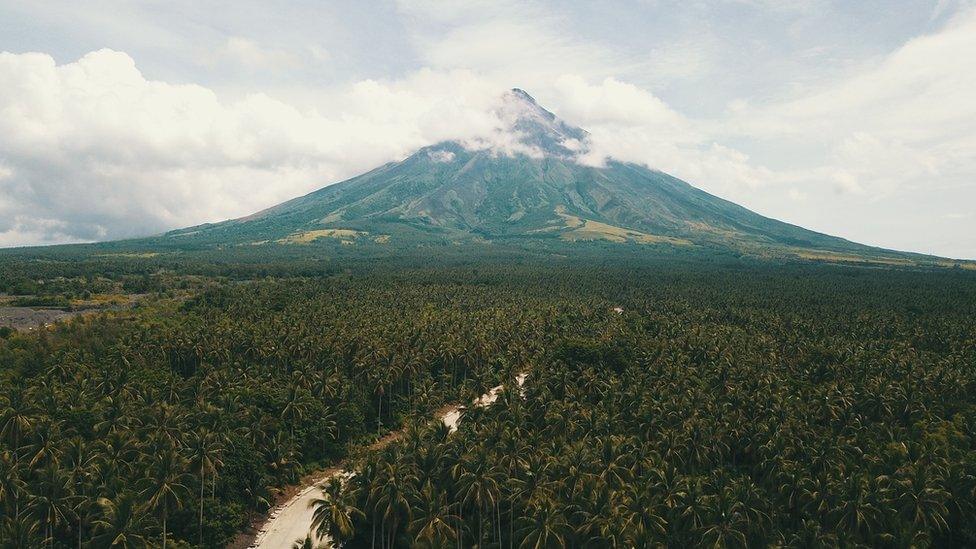
Mayon volcano's near-perfect cone is seen from behind the clouds
On the same week as the evacuations, a 5.5 magnitude earthquake that's unrelated to Mayon struck south of the capital, Manila, resulting in the temporary evacuation of office towers and high-rise buildings.
But Mayon is the most fabled of the country's volcanoes, thanks to its near-perfect shape. It's the world's most conical volcano, according to Guinness.
The fiery-red glow of lava on the crater has attracted throngs of tourists. It has also inspired internet memes about Daragang Magayon - a beautiful maiden from local Bicol folklore - and about Filipino Australian beauty queen Catriona Gray, who won the 2018 Miss Universe crown wearing a gown in the colour of Mayon's lava flows.
For Zaira San Pascual, life in the shelter is more difficult because she had to move her late father's wake to the tent village.
The 39-year-old Manila office worker was on the bus to Bicol when her family phoned her to say that they were moving to a shelter. "How could we do it?" she remembers asking herself in panic.
Once she settled in, she realised that the situation was not as bad as the ones she experienced when she was a kid.
"You'll see people smiling, laughing, joking around. It's their coping mechanism, their way of not thinking about how grim their condition is here," she says.
In the calm of night, people at the shelter have no choice but to wait and keep themselves entertained. They huddle in small groups to swap jokes on who has become the Marites - neighbourhood gossip - in their tent village.
While evacuation from inside danger zones is mandatory, there are still those who refuse to leave their homes, like 72-year-old Roger Asilo.
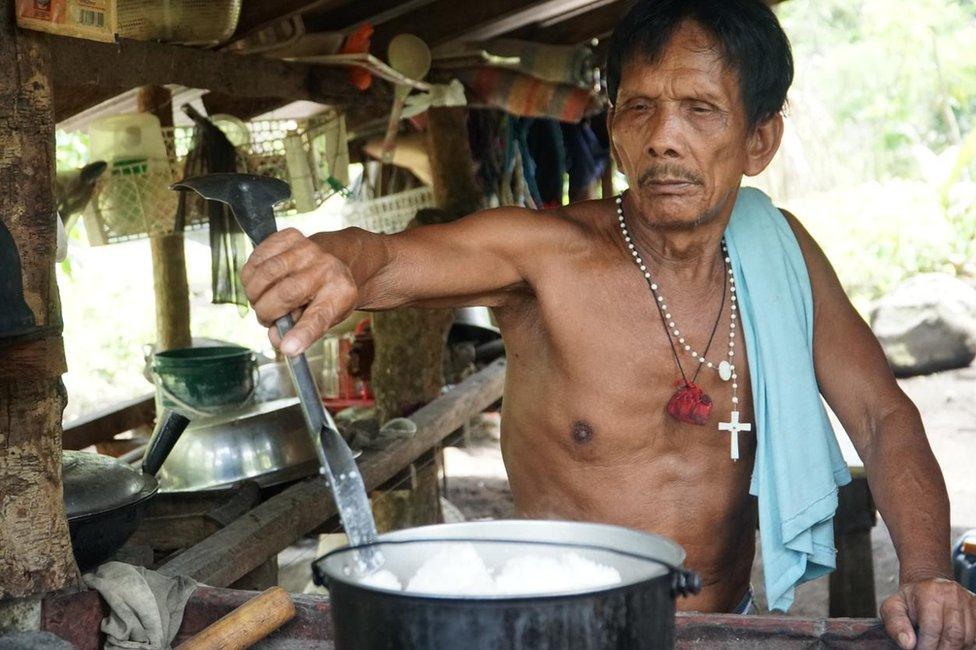
Roger Asilo refuses to stay in a shelter as the volcano rumbles
Mr Asilo hid behind a tree to avoid being hauled on board a lorry that transferred Guinobatan villagers to shelters.
Over the decades, he feels he has learnt when the volcano is acting up enough for him to pack his bags. His son is also staying behind to look after him.
Mr Asilo says he prefers to look after two pigs that a friend left in his care for a fee.
At night, he watches the glowing lava flows seated on a bamboo bench outside his home.
"Every time I look at the volcano spewing lava, I always pray that it would stop," he tells the BBC.
"I am scared but I am prepared."
Related topics
- Published12 June 2023

- Published10 June 2023

- Published28 April 2023

- Published26 April 2023
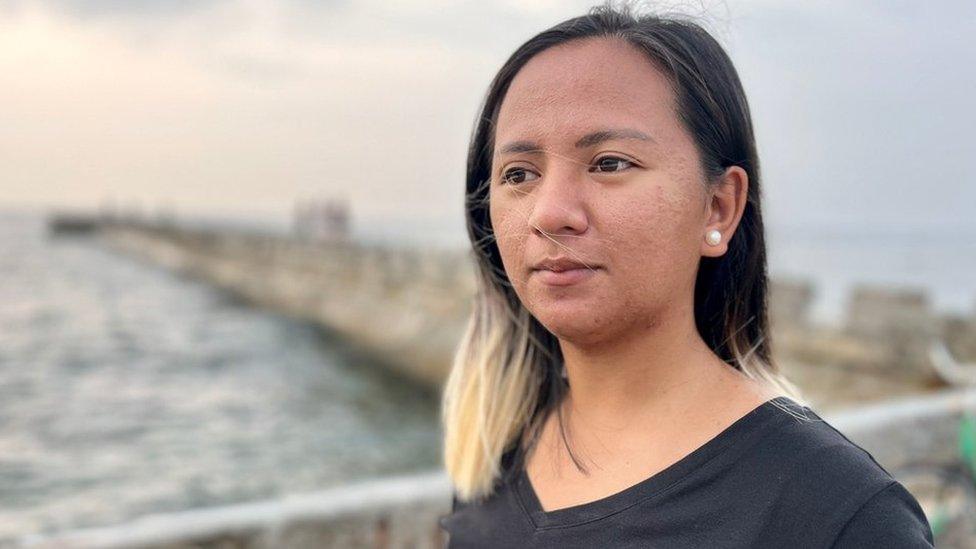
- Published29 March 2023
